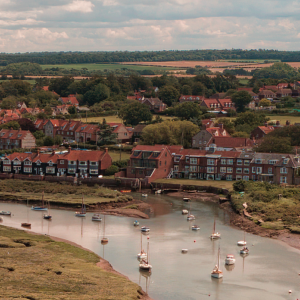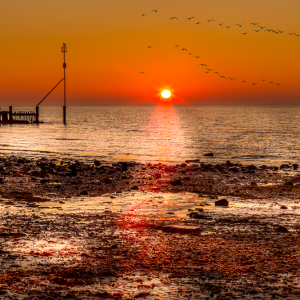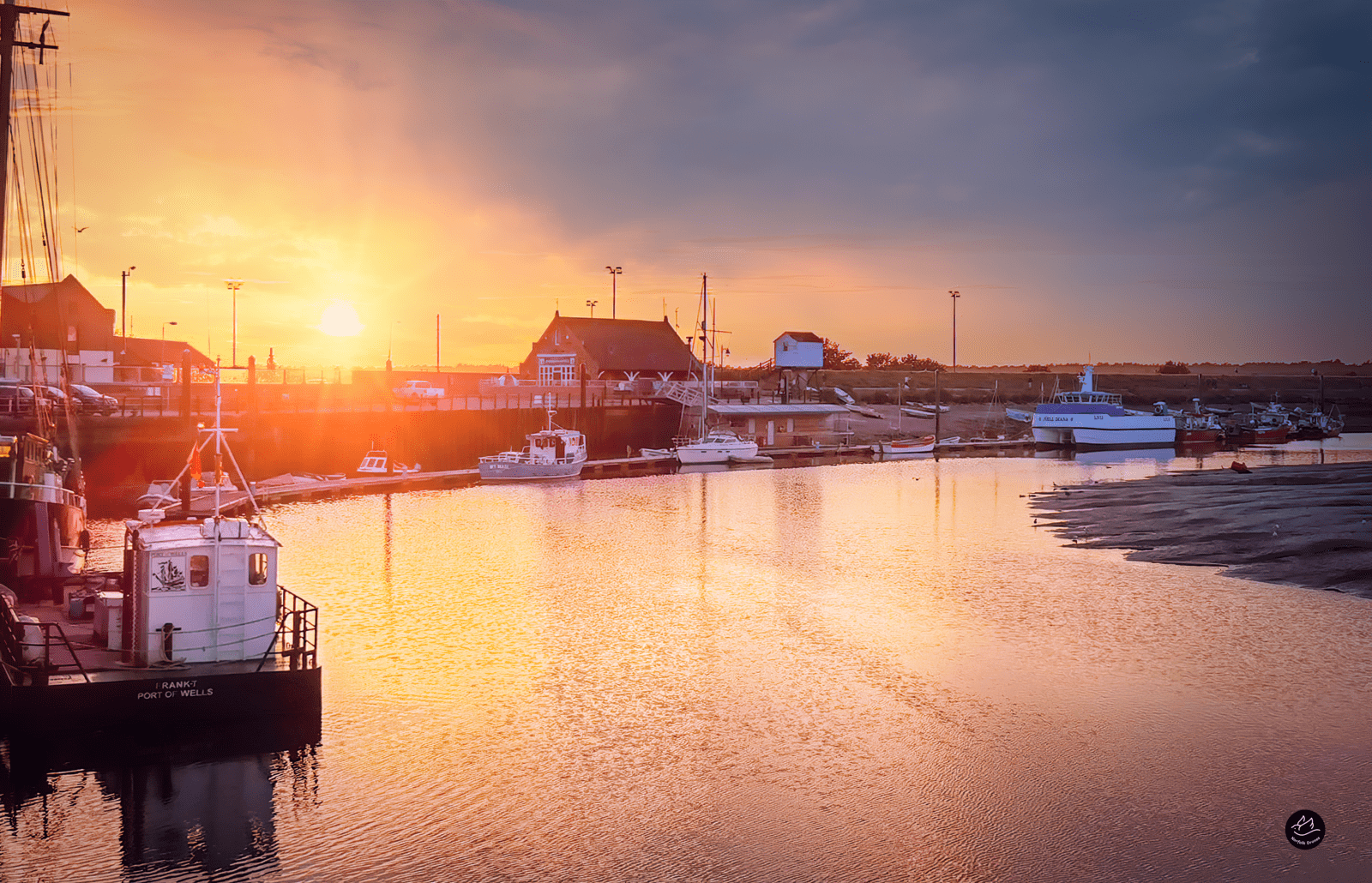Wells On Sea Harbour Sunset
£9.99
Description
The North Sea is now a mile from the town; the main channel which once wandered through marshes, grazed by sheep for hundreds of years, was confined by earthworks to the west in 1859 when Holkham Estate reclaimed some 800 hectares of saltmarsh north-west of Wells with the building of a mile-long bank.[5] This reclamation was claimed to have reduced the tidal scour though the West Fleet which provided much of the water entered the channel to its north.
Because the town has no river running through it, Wells relies on the tides to scour the harbour. The problem of siltation had preoccupied the merchants of the town for hundreds of years and occupied the attentions of various engineers, leading eventually to disputes which came to court in the eighteenth century. Sir John Coode, who had been knighted for his work on the completion of Portland harbour was recruited to solve its siltation problems in the 1880s. No attempted solution proved permanent. The growth of faster marine traffic whose wake washes at the banks of the marshes has widened the channel and reduced tidal flow further.
The town has been a seaport since before the fourteenth century when it supplied grain to London and subsequently to the miners of the north east in return for which Wells was supplied with coal. Until the nineteenth century, it was easier to carry bulk cargoes by sea than overland. It was a significant port in the sixteenth century with 19 ships over 16 tons burden operating out of Wells in 1580, making it the major port in the area; the main trade was corn.[6] Wells was also from early days a manufactury of malt. At its height the town boasted up to twelve maltings, having in 1750 contributed a third of the exports of malt from the country, mostly to Holland, more than any other port save Yarmouth.
Wells was also a fishing port: in 1337 it is recorded as having had thirteen fishing boats; next door Holkham had nine. Its mariners brought first herring and then cod from Iceland in quantity between the fifteenth and seventeenth centuries. The regulation of the harbour in order to preserve its use was by Act of Parliament in 1663; and in 1769 Harbour Commissioners were appointed with powers over vessels entering and leaving (as they still have today). The Quay was substantially rebuilt in 1845 as part of attempts to improve the town. At the same time, Improvement Commissioners were appointed with the task of making the town commodious and attractive to residents and the burgeoning tourist trade. As a small port, it built ships until the late nineteenth century; it never transferred to building motor vessels or to steel hulls. The coming of the railway in 1857 reduced the harbour trade but it revived briefly after the Second World War for the import of fertilizer and animal feed. In 1982 there were 258 ship movements into the harbour.[7]
In the nineteenth century malting assumed an industrial character dominated by merchants rather than hands-on maltsters. Eventually, the entire estate was acquired by F. & G. Smith who had maltings in Dereham and Great Ryburgh; they latterly bought out the competition becoming one of the biggest maltsters in the country. Following the Great War demand began to fall and new methods of production were being used. After a local dispute, they closed the Wells operation down in 1929. Other agriculture-related enterprises such as the Ipswich-based Eastern Counties Farmers Cooperative were, over the following years, bought out or closed. The post-war revival of the harbour trade made of the Quay a busy place from the 1960s to the 1990s. Small coasters, mostly from across the Channel,[8] brought in fertiliser and animal feed, latterly mostly soya beans until 1992 when changes in government regulations and the increasing size of vessels made the port uneconomic. Wind-farm support began in 2009 with the building of the Sheringham Shoal Offshore Wind Farm.
Tourism, which had begun on a small scale a century before became a major draw, based as it was on the Pinewoods Caravan site much expanded post-war.
Related products
-

Burnham Overy Staithe Harbour
0 out of 5£9.99 Add to basket -


Bessingham Manor North Norfolk
0 out of 5£9.99 Add to basketBessingham Manor North Norfolk
SKU: Bessingham Manor Category: High Resolution Images Tags: aerial image of bessingham manor, bessingham manor£9.99 -


Hunstanton Beach Sunset Seagulls Fishing Boat
0 out of 5£9.99 Add to basket -


Hunstanton Beach Sunset
0 out of 5£9.99 Add to basketHunstanton Beach Sunset
Category: Sunsets Tags: beach, hunstanton, Hunstanton Beach Sunset, sunset£9.99

Reviews
There are no reviews yet.